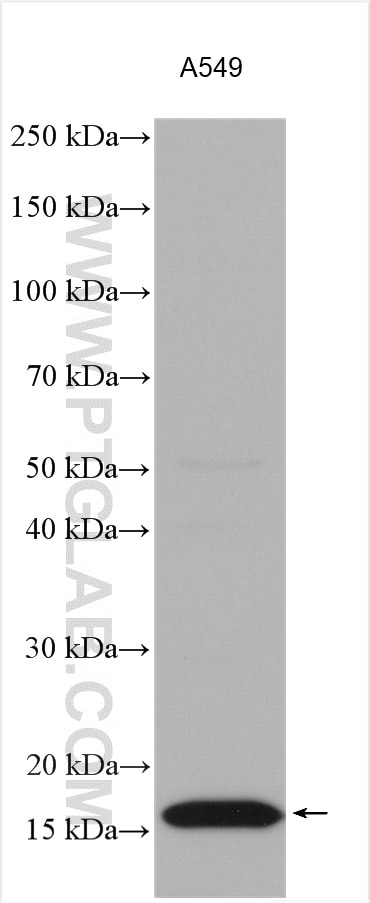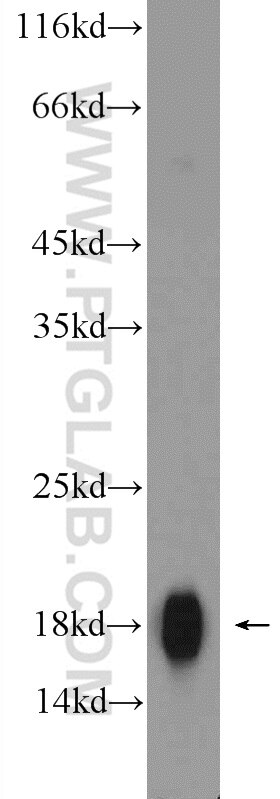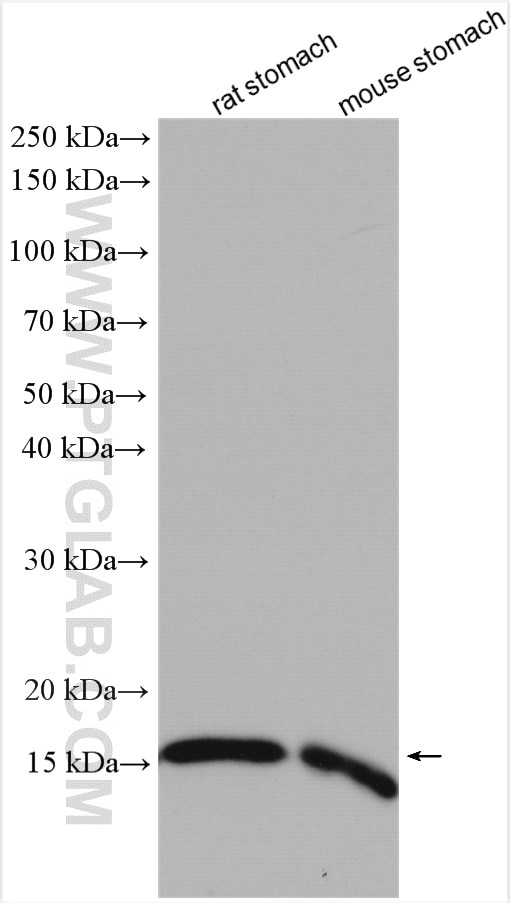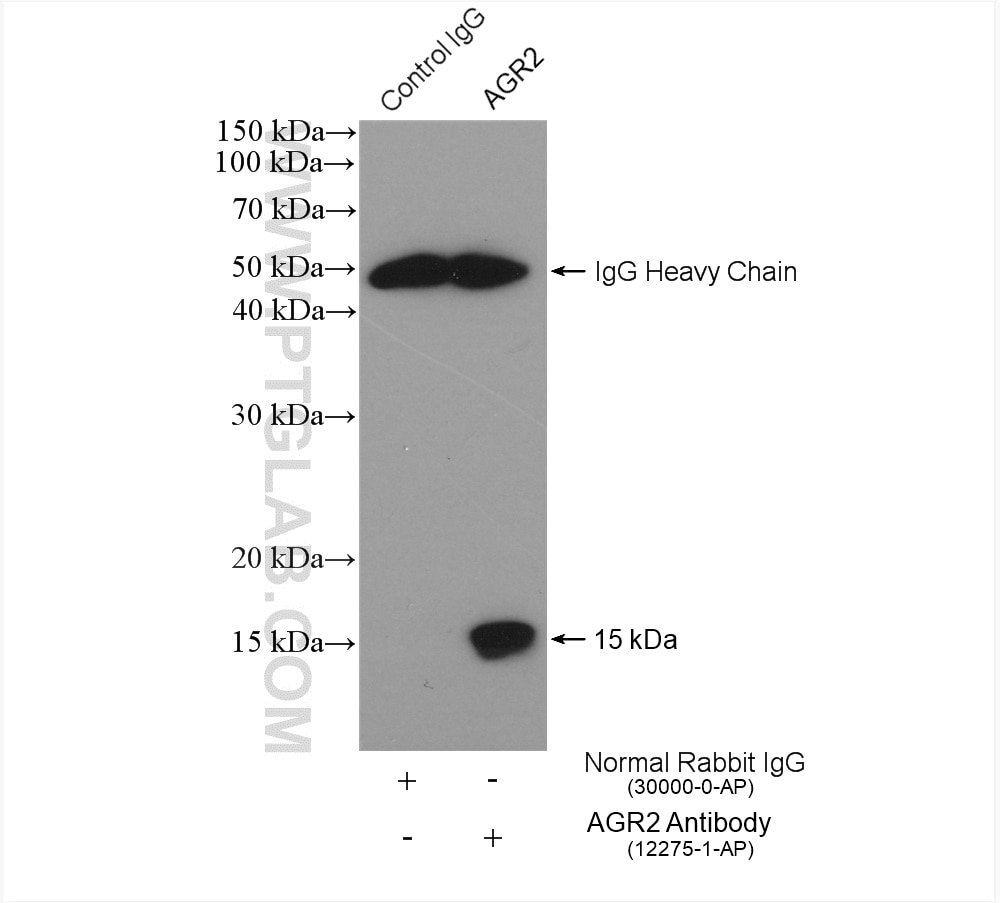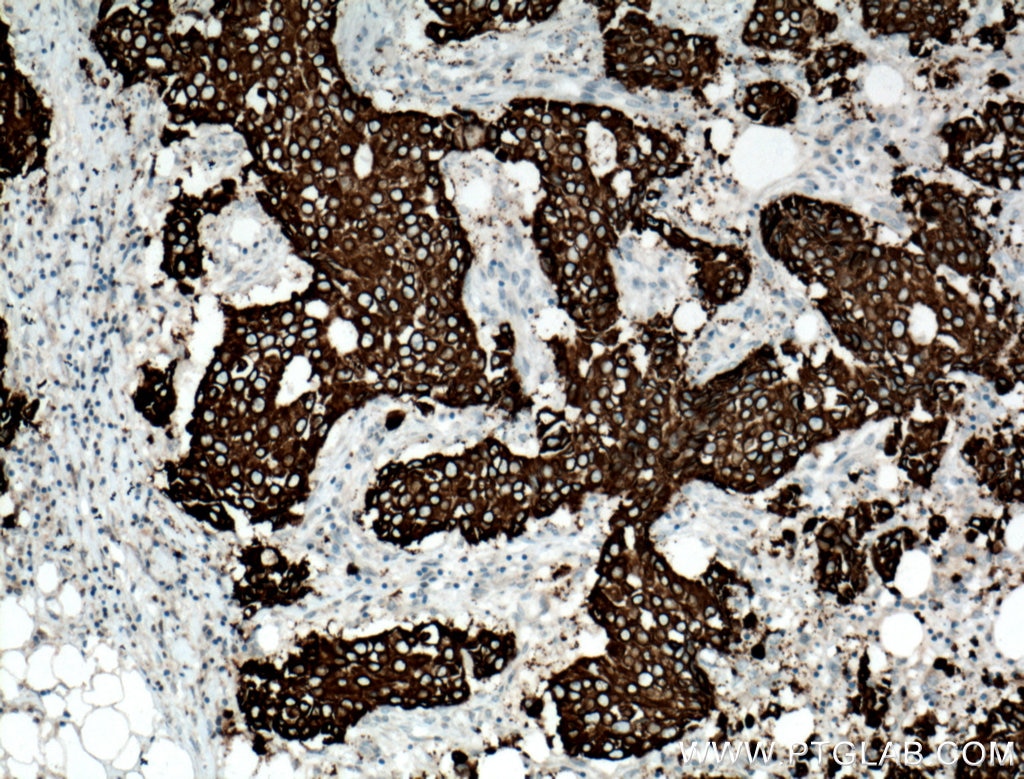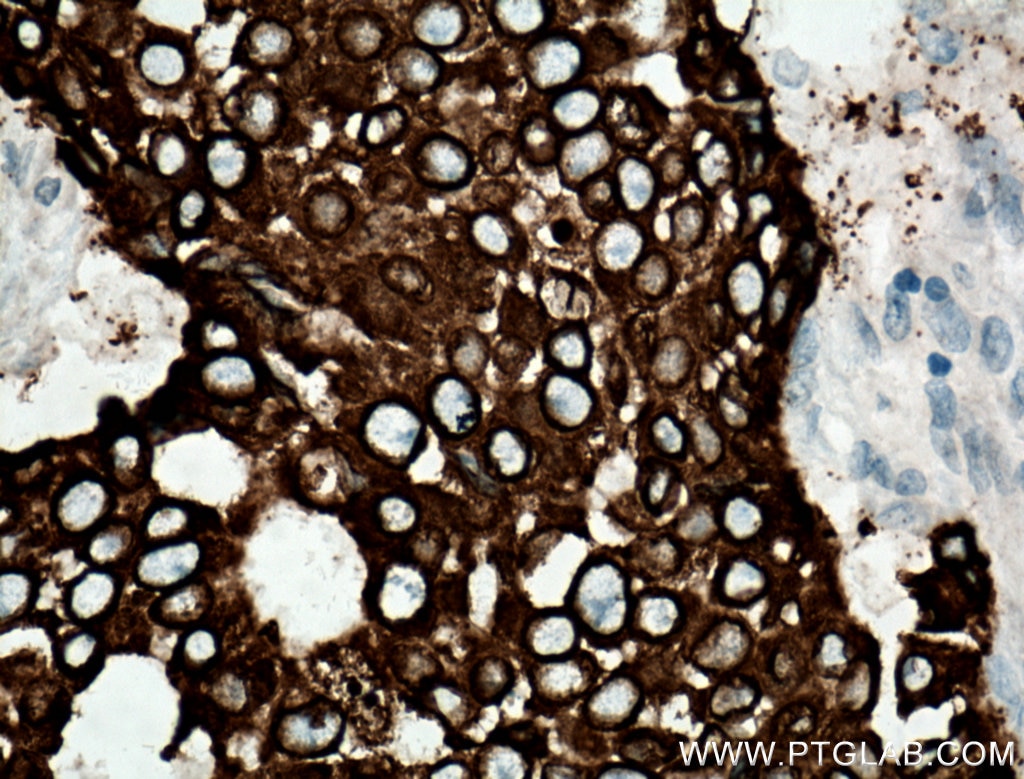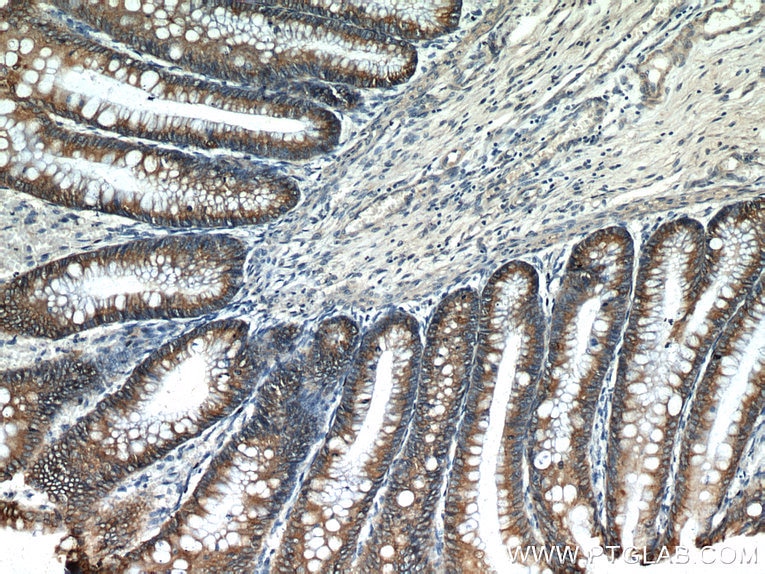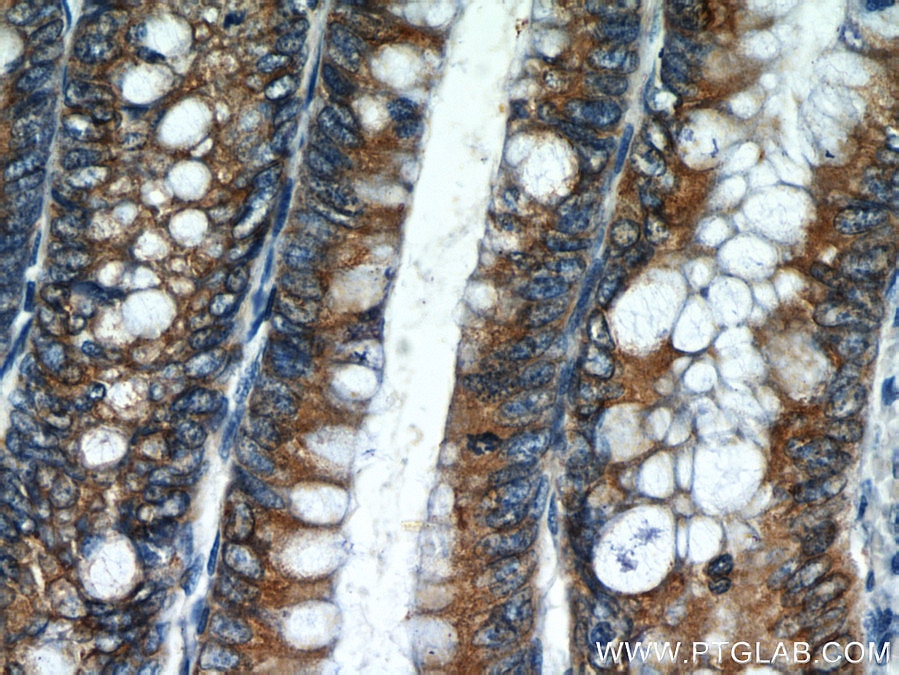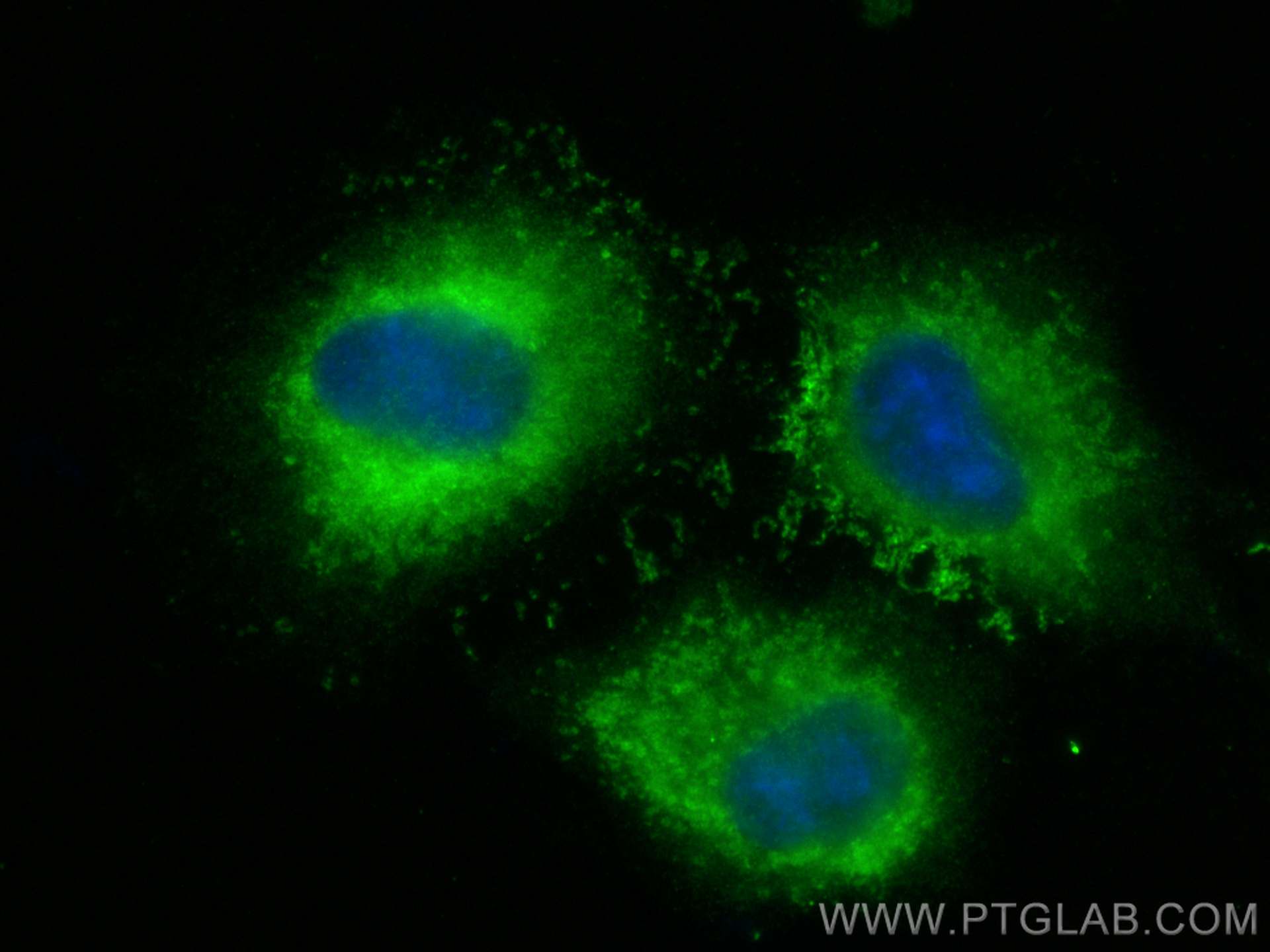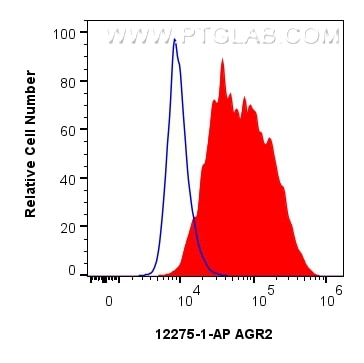- Phare
- Validé par KD/KO
Anticorps Polyclonal de lapin anti-AGR2
AGR2 Polyclonal Antibody for WB, IHC, IF/ICC, FC (Intra), IP, ELISA
Hôte / Isotype
Lapin / IgG
Réactivité testée
Humain, rat, souris
Applications
WB, IHC, IF/ICC, FC (Intra), IP, ELISA
Conjugaison
Non conjugué
N° de cat : 12275-1-AP
Synonymes
Galerie de données de validation
Applications testées
| Résultats positifs en WB | cellules A549, tissu de côlon de rat, tissu d'estomac de rat, tissu d'estomac de souris |
| Résultats positifs en IP | cellules A549, |
| Résultats positifs en IHC | tissu de cancer du sein humain, tissu de côlon humain il est suggéré de démasquer l'antigène avec un tampon de TE buffer pH 9.0; (*) À défaut, 'le démasquage de l'antigène peut être 'effectué avec un tampon citrate pH 6,0. |
| Résultats positifs en IF/ICC | cellules A549, |
| Résultats positifs en FC (Intra) | cellules A549, |
Dilution recommandée
| Application | Dilution |
|---|---|
| Western Blot (WB) | WB : 1:500-1:2000 |
| Immunoprécipitation (IP) | IP : 0.5-4.0 ug for 1.0-3.0 mg of total protein lysate |
| Immunohistochimie (IHC) | IHC : 1:50-1:500 |
| Immunofluorescence (IF)/ICC | IF/ICC : 1:50-1:500 |
| Flow Cytometry (FC) (INTRA) | FC (INTRA) : 0.40 ug per 10^6 cells in a 100 µl suspension |
| It is recommended that this reagent should be titrated in each testing system to obtain optimal results. | |
| Sample-dependent, check data in validation data gallery | |
Applications publiées
| KD/KO | See 2 publications below |
| WB | See 9 publications below |
| IHC | See 9 publications below |
| IF | See 7 publications below |
| IP | See 1 publications below |
Informations sur le produit
12275-1-AP cible AGR2 dans les applications de WB, IHC, IF/ICC, FC (Intra), IP, ELISA et montre une réactivité avec des échantillons Humain, rat, souris
| Réactivité | Humain, rat, souris |
| Réactivité citée | rat, Humain, souris |
| Hôte / Isotype | Lapin / IgG |
| Clonalité | Polyclonal |
| Type | Anticorps |
| Immunogène | AGR2 Protéine recombinante Ag2919 |
| Nom complet | anterior gradient homolog 2 (Xenopus laevis) |
| Masse moléculaire calculée | 175 aa, 20 kDa |
| Poids moléculaire observé | 17-20 kDa |
| Numéro d’acquisition GenBank | BC015503 |
| Symbole du gène | AGR2 |
| Identification du gène (NCBI) | 10551 |
| Conjugaison | Non conjugué |
| Forme | Liquide |
| Méthode de purification | Purification par affinité contre l'antigène |
| Tampon de stockage | PBS with 0.02% sodium azide and 50% glycerol |
| Conditions de stockage | Stocker à -20°C. Stable pendant un an après l'expédition. L'aliquotage n'est pas nécessaire pour le stockage à -20oC Les 20ul contiennent 0,1% de BSA. |
Informations générales
AGR2, also named AG2 or HPC8, encodes anterior gradient protein 2 homolog which belongs to the AGR family. It is a secreted protein localized in endoplasmic reticulum. AGR2 plays roles in MUC2 post-transcriptional synthesis,secretion and production of mucus by intestinal cells. AGR2 was significantly elevated in the pancreatic juice from patients with pre-malignant conditions as well as pancreatic cancer compared to control pancreatic juice samples. AGR2 levels in pancreatic juice could potentially be used in assessment of high-risk patients undergoing endoscopic procedures.
Protocole
| Product Specific Protocols | |
|---|---|
| WB protocol for AGR2 antibody 12275-1-AP | Download protocol |
| IHC protocol for AGR2 antibody 12275-1-AP | Download protocol |
| IF protocol for AGR2 antibody 12275-1-AP | Download protocol |
| IP protocol for AGR2 antibody 12275-1-AP | Download protocol |
| Standard Protocols | |
|---|---|
| Click here to view our Standard Protocols |
Publications
| Species | Application | Title |
|---|---|---|
Nat Cell Biol Opposing Wnt signals regulate cervical squamocolumnar homeostasis and emergence of metaplasia. | ||
Nat Protoc Patient-derived and mouse endo-ectocervical organoid generation, genetic manipulation and applications to model infection. | ||
Cell Rep Med Distinctive multicellular immunosuppressive hubs confer different intervention strategies for left- and right-sided colon cancers | ||
Proc Natl Acad Sci U S A A discrete population of squamocolumnar junction cells implicated in the pathogenesis of cervical cancer. | ||
J Pathol A novel blueprint for 'top down' differentiation defines the cervical squamocolumnar junction during development, reproductive life, and neoplasia. | ||
Int J Cancer Unique recurrence patterns of cervical intraepithelial neoplasia following excision of the squamo-columnar junction. |
